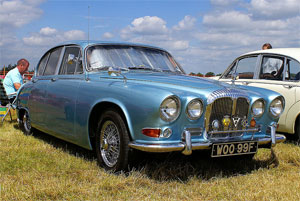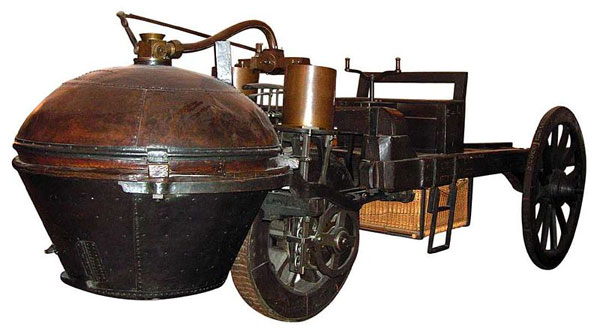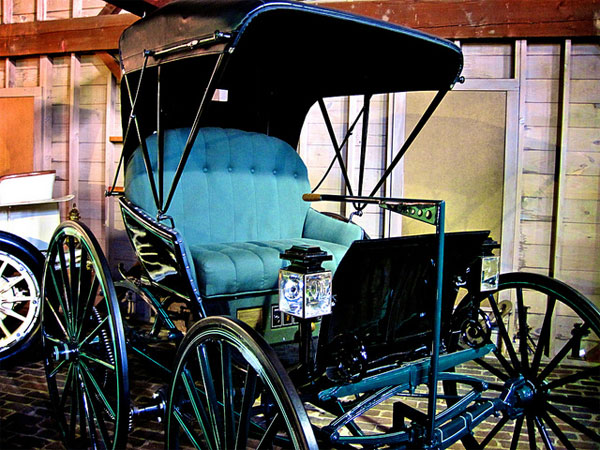History of Classic and Antique Cars
 The history of automobiles isn’t too old but it is very interesting at the same time. The modern day automobiles have developed into a symbol of ultimate comfort and luxury, with so many mind blowing hi-tech features and one-touch functions. However, you will be surprised that some of the classic and antiques cars, aging more than 50 and even 100 years old, are worth millions of dollars in the market. It is not because of their features but they have fallen into the categories of being classic and antique vehicles and the collectors of such gems happily pay huge sums of money for these outdated cars.
The history of automobiles isn’t too old but it is very interesting at the same time. The modern day automobiles have developed into a symbol of ultimate comfort and luxury, with so many mind blowing hi-tech features and one-touch functions. However, you will be surprised that some of the classic and antiques cars, aging more than 50 and even 100 years old, are worth millions of dollars in the market. It is not because of their features but they have fallen into the categories of being classic and antique vehicles and the collectors of such gems happily pay huge sums of money for these outdated cars.
There are certain specifications required for a automobile to be regarded as classic or antique and not every old car can fall under these headers.
Image Credit: Martin Pettitt
Classic Cars
There are different variations for an old automobile to be regarded as a classic car across the globe. Talking about the United Stated, the Classic Car Club of America (CCCA) maintains general criteria of classic cars by stating that such cars need to be 30 to 49 years old. The CCCA explicitly states that any car, American or foreign made, which is manufactured between 1925 and 1948 shall be considered a classic car. However, this criteria is not followed all over the world but in the United States.
Antique Cars
Antique cars are even older than the classic automobiles and are also priced much higher. The antique cars are further divided into two sub-categories according to their age.
Pre-Antique Class
- It normally holds automobiles with the age of 50 to 99 years.
Antique Class
- The cars more than 100 years old are placed under the Antique Class in the United States.
- The United Kingdom follows different criteria for old cars and there are three main categories made for them:
Veteran
- This class of cars includes the vehicles ranging from the era of pre-First World War and includes some of the most unique automobiles. These cars belong to the earliest generations of vehicles and are extremely rare to find these days.
Vintage
- Vintage cars belong to the manufacturing era of 1919 to 1930s. These cars have slightly improved features than the Veteran vehicles but their worth is in millions at the present.
Post-Vintage
- All the other vehicles made after 1930s fall under this category.
- Both of the classic and antique cars are very rarely driven these days but are only protected or displayed in car exhibitions. It is the financial worth of these cars that they are kept under special care and are not risked to be driven on busy roads.
Eras for Antique Cars
For the purpose of registering an antique car, the regulations may vary in different territories. However, a general definition states that any car older than 45 years is to be considered as an antique car. These automobiles are further divided into three eras, namely:
Veteran Era
- This period of time begins right from the invention of automobiles and continues until 1890, when an entirely new generation of cars was introduced. Very rare automobiles belonging to the Veteran Era can be seen at present and these are considered to be the perfect example of an antique car.
Brass Era
- This time span stretches from 1890 to 1918 and is also called the Horseless carriage era. The introduction of gasoline, steam and electric motor vehicles took place during this time and a number of different models of these automobiles were put to the disposal of the public. It is this era which was further capitalised to build the next generation of automobiles.
Vintage Era
- The Vintage Era refers to the time after the World War I, starting from 1920 to 1930. It is notable that by 1910, more than 500 different companies were manufacturing automobiles all over the world but the drastic Great Depression of 1929 wiped out most of them, leaving barely 60 companies. About twelve years later, only 12 automobile manufacturing companies had survived the crushing macro economic conditions.
- These eras conclude until 1930s and all the other cars being manufactured after that come under the category of classic cars.
Europe
The history of classic and antique cars is very rich and even the present day leading automobile brands are established in Europe. It dates way back to 1801 when an Englishman, Richard Trevithick, built the first steam-powered carriage and it was the first horseless vehicle. There are also claims from different quarters that the first ever steam-run car carriage was built by Nicolas-Joseph Cugnot in 1770.
It was not until 1888 when a German manufacturer, Karl Benz, launched the first commercially produced automobiles. The electric battery-powered cars were introduced not earlier than 1932 by Thomas Davenport and Robert Anderson of United Kingdom.
Image Credit: Wikimedia Commons
United States
The first ever patent for manufacturing an automobile in the United States was registered on 5th November 1895 by George Selden of Rochester, however, a lot of automobiles had already been in production prior to the registration of this patent.
The first gasoline-powered car was introduced by Charles Duryea in 1893. This three-wheeled vehicle started off a new race of automobile manufacturing and a number of other people got involved in this business. Elwood Haynes, Ransom Olds, Charles King and Henry Ford are among the notable manufacturers of gasoline powered automobiles in 1890s.
The popularity of these vehicles swelled rapidly, especially the organised racing events of these cars stirred great public interest. This immense success of gasoline powered vehicles encouraged the bicycle and buggy manufacturers to shift and start building automobiles. A number of such people entered the industry and automobile manufacturing received a huge boost as a result.
Image Credit: happy via
Racing Events
With the increasing trend of gasoline powered automobiles, the manufacturing companies organised particular racing events to induce more interest in general public about these new vehicles. The first ever organised auto race was held in Paris, France, whilst a 54.36 miles race from Chicago to Evanston was the first auto competition held in the United States.
Modern Classics
There are also vehicles which are older but not old enough to be recognised as classics. The age of such automobiles range from 15 to 25 years and they are generally termed as Modern Classics. Normally, those vehicles are included in this category which is discrete by insurance brokers and insurance companies, regarding these automobiles as vehicles which are collectible regardless of their age.
Classic Car Styling
The appearance and styling of automobiles has greatly evolved and more innovation is constantly being indulged in this industry. The major change in the styling of classic cars was seen after the World War II. It was after this time period that most classic cars started to possess envelope bodies in basic plan and the conventional replaceable-fender treatment was also changed. A new trend of removable fenders, trunk, headlights and vertical grill treatment followed afterwards.
Despite of their distinctive style and appearance, the antique and classic cars didn’t have appropriate safety measures and were also involved in fatal accidents. The development in the field of automobile engineering has changed the things to an entire new dimension, yet the worth of antique cars is in millions of dollars at the present. Antiques cars can be a good showpiece for your home or museum but certainly not a comfortable ride to have!


























